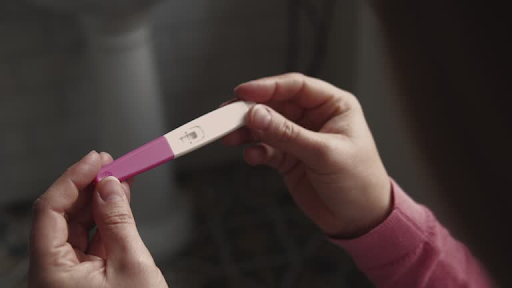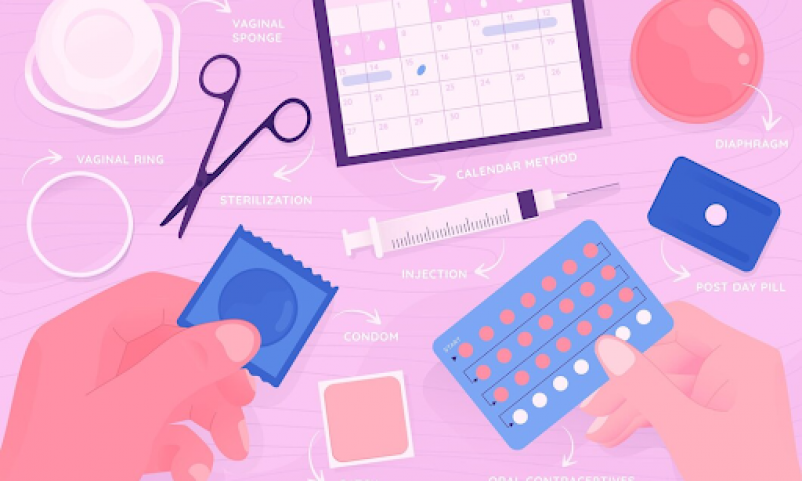Contraceptive implants are a widely used birth control method due to their long-term effectiveness and convenience. But despite their growing popularity, misconceptions about their use, safety and side effects persist. These birth control myths can lead to confusion and hesitation, preventing you from making informed and correct decisions about your reproductive health.
In this article, we will address the most common misconceptions about the birth control implant so you can gain clarity on how it works, its potential side effects and its actual risks versus perceived dangers.
Myth 1 – Birth Control Implants Cause Permanent Infertility

A widespread misconception about birth control implant is that it can result in permanent infertility. It may be due to some instance where individuals experience a delay in fertility after discontinuing a hormonal birth control method, as their bodies adjust. But this temporary delay is sometimes misinterpreted as permanent infertility.
For individuals with pre-existing reproductive health issues, these conditions become apparent after stopping contraception, and may mistakenly be attributed to the implant itself. This belief often discourages individuals from considering this contraceptive method.
FACT
Women with no pre-existing fertility issues need not worry about this as fertility typically returns quickly after the removal of the implant. Moreover, there is no evidence linking birth control implants to any interference with women’s ability to conceive.
Hormonal contraceptives, including implants, work by temporarily altering hormone levels to prevent ovulation and pregnancy. Once the implant is removed, these effects are reversed, and ovulation resumes, often within weeks or months.
Myth 2 – Implants Lead to Significant Weight Gain
Many believe that birth control implants cause substantial weight gain, leading some individuals to avoid this contraceptive method altogether.
FACT
While some users report minor weight changes, averaging around 2 to 3 pounds, extensive research shows no consistent link between implants and significant weight gain. Weight gain during implant use may be influenced by factors like ageing, dietary habits, metabolism changes or reduced physical activity rather than the implant itself.
Myth 3 – The Implant Can Migrate to Other Parts of the Body
There is a concern that birth control implants can migrate to other parts of the body, leading to potential health complications. This fear often stems from reports of rare cases where implants have moved from their intended location.
FACT
Although there are reports of implant migration, this is rare. The risk of migration is significantly reduced when the implant is inserted correctly by a trained healthcare provider. Inadequate training or improper insertion sites can increase the risk of migration.
Myth 4 – Insertion and Removal Are Painful Procedures
General anxiety about medical procedures, especially those involving needles or incisions, can lead people to assume that insertion and removal are painful.
FACT
Both the insertion and removal of a birth control implant are quick procedures performed under local anaesthesia, resulting in minimal discomfort for most individuals. The use of local anaesthesia ensures that you do not feel pain during the procedure itself. You may experience a slight pinch or sting when receiving the numbing shot, but this is typically brief and mild.
Myth 5 – Implants Cause Severe Mood Swings or Depression
Many people believe that birth control implants lead to severe mood swings or depression in all users. This misconception often deters individuals from considering this form of contraception due to concerns about mental health impacts.
FACT
Hormonal contraception can affect people differently due to individual sensitivities to hormonal changes. While there are individuals who have reported mood changes while using progestin-based contraception, most users do not experience significant mood changes.
Myth 6 – Implants Increase the Risk of Cancer
There is a concern that birth control implants may increase the risk of cancer, particularly breast cancer, due to misunderstandings about hormonal birth controls and their potential effects on cancer risk.
FACT
While some studies suggest a small increase in breast cancer risk associated with progestogen-only contraceptives, this risk is generally considered very small and may not apply universally.
The risk associated with combination contraceptives is sometimes mistakenly applied to all hormonal birth control methods, including implants. However, the risks can vary between different types of hormonal contraceptives.
Myth 7 – Only Women Who Have Had Children Can Use Implants
In the past, certain contraceptive methods were recommended based on marital status or parity (number of children). This cultural or social norm may influence perceptions about who should use certain contraceptive methods, leading to misconceptions about eligibility.
FACT
Birth control implants are suitable for most women, regardless of whether they have had children or not. They offer a reliable and long-term contraceptive option for anyone seeking to prevent pregnancy, including adolescents and adults who have never been pregnant.
Myth 8 – Implants Protect Against Sexually Transmitted Infections (STIs)
Some individuals may confuse the effectiveness of implants in preventing pregnancy with protection against STIs due to a lack of understanding about how various birth control methods work.
FACT
While birth control implants are highly effective at pregnancy prevention, they do not offer any protection against STIs. The implant works by releasing progestin, but it does not create a barrier against pathogens that cause STIs. Always use condoms, dental dams and pre-exposure prophylaxis to prevent sexually transmitted infections.
Myth 9 – Implants Are Visible and Noticeable Under the Skin
People unfamiliar with the implant may assume it is larger or bulkier than it actually is. Some believe that birth control implants are noticeable under the skin, making them easily detectable and potentially uncomfortable.
FACT
The implant is a small, flexible rod (approximately 4 cm in length), placed discreetly under the skin of the upper arm. Once inserted, it is typically not visible to others and can only be felt if you press on the area. For most users, the implant remains unobtrusive and does not interfere with daily activities.
Myth 10 – Implants Require Frequent Replacement
Some individuals may not fully understand how long birth control implants remain effective, leading them to believe that frequent replacements are necessary. This misconception can deter them from considering this long-term contraceptive option.
FACT
Birth control implants provide long-term contraception, effective for up to 3-5 years. Unlike oral contraceptive pills or monthly injections, implants do not require regular maintenance or replacement until their effective period ends or earlier if desired.
Conclusion
Birth control implants are often surrounded by misconceptions that can deter individuals from considering this effective and convenient contraceptive method.
Common birth control myths include the belief that implants cause permanent infertility, significant weight gain, severe mood swings or increased risk of cancer, and that they are visible under the skin or require frequent replacement.
However, evidence shows that fertility typically returns quickly after implant removal, weight changes are minimal and mood effects vary by individual. There is also no significant link to the development of cancer. Finally, implants are discreet and effective for up to 3 to 5 years. Remember, though, that they do not protect against STIs.
By understanding the facts about birth control implants and other contraceptive methods, you can choose a suitable option for your lifestyle. Knowing the fact on these myths is crucial for making informed decisions about your reproductive health. Consulting with healthcare providers is essential for personalised advice tailored to individual needs and circumstances.









